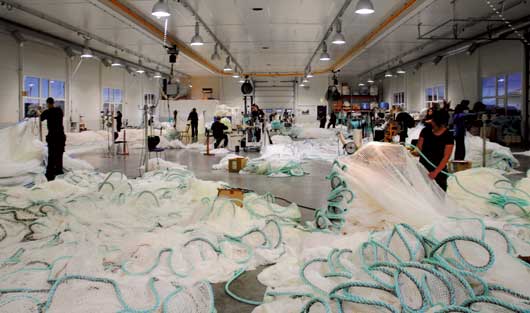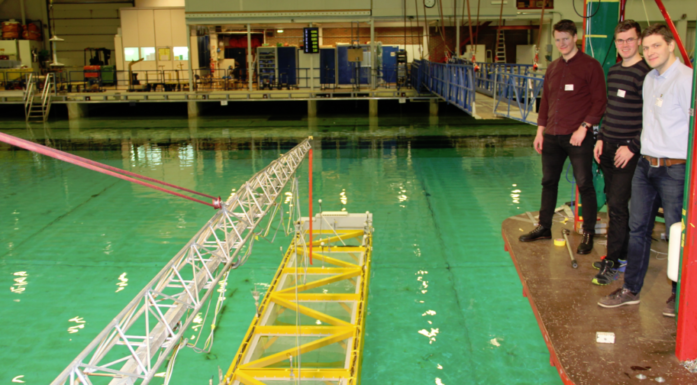Teamwork to build a sustainable future
Interdisciplinary training turns book learning into practical – and green – experience.
Take 800 master’s students from every discipline imaginable, ask them to work together to solve 28 gnarly environmental problems, and what do you get? For students in NTNU’s Experts in Teamwork (EiT) course, the answer just may be a chance to make a greener world.
To coincide with the Rio + 20 Conference on Sustainable Development in Rio de Janeiro in June, EiT students are creating green development projects, which will compete at “Technoport 2012 – Sharing Possibilities”, an international conference on sustainability in April in Norway. One NTNU student from the winning team will travel to the UN Rio conference in June as a part of the official Norwegian delegation.
The effort, called Mission Rio, is the latest development in NTNU’s evolving cross-disciplinary EiT course, which is mandatory for all NTNU master’s students and has the university’s largest enrolment. More than 2000 first-year master’s students take the course each year, which is led by roughly 70 different faculty instructors in small groups, called villages.
“Global challenges are complex and must be met with interdisciplinary solutions. This is the reason for the Mission Rio initiative and why the collaboration with EiT is so important,” says Heidi Fossland, managing director of Technoport, a Trondheim-based group that includes NTNU and SINTEF and is designed to stimulate knowledge sharing in the transition to a green economy. Technoport is the main organizer of the April conference where the EiT student village ideas will compete.
Water woes to fish farms
The topics for the Mission Rio projects range broadly. Some students are using multimedia tools to raise awareness about the world’s water woes. Others are addressing the construction of zero-emission buildings, or the role of salmon aquaculture and coastal communities. Each EiT village is composed of roughly 30 students and one or more instructors. The students break the issues into smaller group problems.
The idea is to bring students with different academic backgrounds together to work on the common challenge posed by each village, says Bjørn Sortland, NTNU’s EiT director.
The assignment means that students have to work in a diverse group, with all the associated difficulties and rewards, he says. But organizers also hope that putting students from different disciplines together will lead to new, exciting and practical ideas. “Perhaps 10 per cent of these students might have something really good that might be presented at Rio,” Sortland says.
Teamwork key
Translating book learning into real-world knowledge is a problem that all engineering schools worldwide face, and not always successfully, says Karl A. Smith, who is a professor of Engineering Education at Purdue University and Morse-Alumni Distinguished Teaching Professor Emeritus at the University of Minnesota.
He says that few universities promote the kind of multidisciplinary learning that characterizes NTNU’s Experts in Teamwork course – and that perhaps more should. “Most academic programmes are quite siloed, and there is not a lot of interaction between different disciplines,” he observed.
Coastal communities’ needs
Nicholas Sanchez, a master’s student from Columbia who is studying environmental chemistry at NTNU, was intrigued by EiT’s cross-disciplinary approach. His village was “Sustainable coastal communities: Salmon aquaculture”. The intensive course took place over just three weeks.
“This is the first time I have dealt with political and social scientists,” Sanchez said. “I think it is really interesting to interact with these different students. The idea of mixing different competencies is pretty nice.”
Sanchez’s village travelled to the Trøndelag coast, to see how aquaculture fits into the larger economic and social aspects of the region. There, they talked to officials and business leaders on the islands of Hitra and Frøya, which rely on salmon aquaculture to provide jobs. But salmon aquaculture isn’t completely sustainable, and for young adults growing up on the Trøndelag coast, it isn’t always an attractive job. The students in Sanchez’s village thus addressed both challenges.
Tapping the Brain Trust
On a cold Friday in late January, the village’s five student groups presented their projects – which included a recommendation to implement “integrated multi-trophic aquaculture,” which involves growing not only fish, but mussels and seaweed, which can use excess nutrients and leftover fish food from salmon farming.
Another group presented high-school science modules designed to interest the region’s students in aquaculture. In the audience were business and municipal leaders from Hitra and Frøya, listening intently to the students’ presentations.
“I’m really impressed by the questions being raised by these students,” said Leif Harald Hanssen, general manager of a group called “Kysten er Klar”, a cooperative promotional effort between 11 coastal communities and the county of Sør-Trøndelag. “They have really identified the central issues that concern businesses here and the different communities.”
Hanssen says he’s thrilled to have so many students exploring coastal issues with such creative ideas. “We really like tapping into the Trondheim Brains Trust,” he said.
Nancy Bazilchuk





